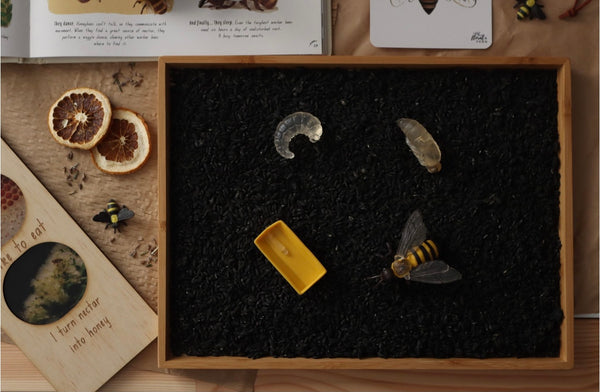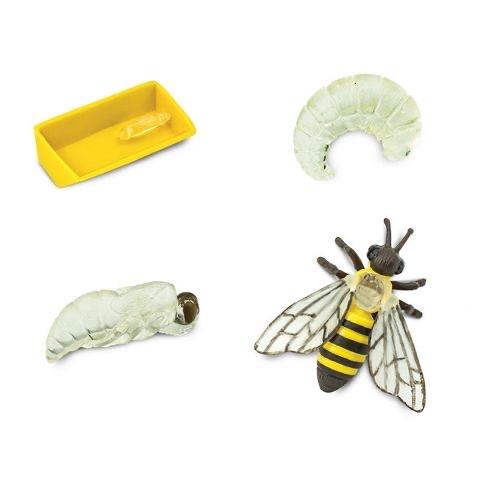Safari
Life Cycle Of A Honey Bee- Safari Ltd
Regular price
$21.00
Tax included.
Shipping calculated at checkout.
- Hardworking honeybees rapidly transition through their life cycle, with only 21 days from egg to adulthood. Bees in the larval stage are fed by workers, and once they go through metamorphosis and become adults, they join the search for nectar and pollen.
- Scientific Name: Apis mellifera
- Characteristics: Honeybee larvae and pupae, like those of many other insects, are almost unrecognizable compared to adult bees. These realistically sculpted figures allow a peek inside the hive.
- Size and Color: While eggs, larvae, and pupae are almost clear, the honeybee takes on its iconic black and yellow coloration when it emerges from the pupa stage as an adult. This adult figure is 3 inches long, about the length of a computer mouse.
- The Life Cycle of a Honey Bee is part of the Safariology® collection.
- All of our products are Non-toxic and BPA free.
Life in a beehive is fascinating, with workers, drones, and a queen crowded together with eggs, larvae, and pupae. Only the queen lays eggs, of course, and a hive that loses its queen is practically doomed. Workers live short lives, approximately five weeks of gathering food for the next generations of honey bees. A drone’s only job is to seek other queens in need of a hive. Honey bees appear in the fossil record during the Cretaceous period, right about when flowers appeared. Although not native to North America, they were brought by colonists and now flourish all over the world.
- Recommended Age: 4+
- Size in cm: 19.5 W x 23 H
- Size in inches: 7.68 W x 9.06 H




